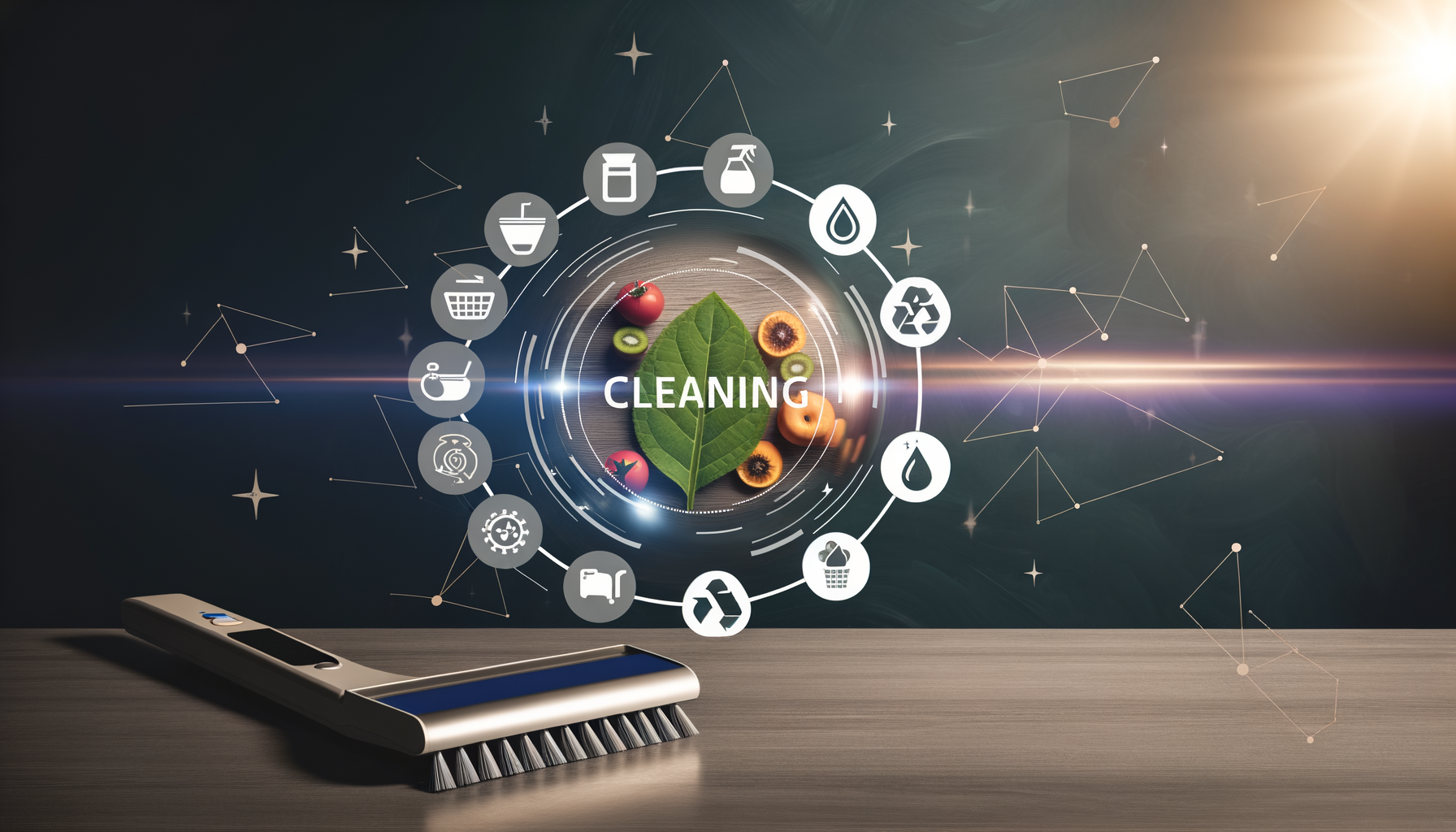Driving Change: The Shift to Sustainable Cleaning Technologies in the Food Sector
 Shreya Sulkunde
Shreya Sulkunde
In today's evolving landscape, the food industry is embracing a seismic shift towards sustainability. With consumers becoming increasingly conscious about the environmental impacts of their choices, food industries are recognizing the urgent need to integrate eco-friendly practices, particularly in their cleaning operations. This article delves into the rise of sustainable and eco-friendly cleaning technologies within the food sector, highlighting the necessity, benefits, challenges, and future directions of this transformative movement.
The Necessity for Eco-Friendly Cleaning
The necessity of sustainable cleaning technologies goes beyond just environmental appeal. This change is driven primarily by the global commitment to reduce carbon footprints, conserve natural resources, and minimize chemicals affecting our ecosystems. Here are some compelling reasons underscoring the need for this shift:
Environmental Responsibility: Cleaning processes contribute significantly to water usage and chemical runoff. By using eco-friendly products and methods, industries can curtail water wastage and chemical pollution.
Regulatory Compliance: With increasing governmental regulations on chemical usage, food industries face pressure to adhere to sustainable norms.
Consumer Expectations: The modern consumer is more informed on environmental issues than ever and demands transparency in processes, including hygiene and cleaning practices.
The Benefits of Sustainable Cleaning Technologies
Reduction in Water Usage: Cutting-edge, eco-friendly cleaning systems like steam cleaning and water-efficient spray technologies significantly reduce water consumption.
Improved Safety Profiles: Traditional cleaning agents often contain volatile organic compounds (VOCs) which pose health risks. Sustainable alternatives are non-toxic and safer for workers.
Lower Operating Costs: Although the initial investment in sustainable technologies might be high, long-term savings emerge from reduced water bills and extended equipment life.
Enhanced Brand Loyalty: Brands adopting eco-friendly practices cultivate a positive image that resonates well with consumers, potentially increasing customer loyalty.
Challenges Along the Path to Sustainability
Despite the clear benefits, the transition isn't without its hurdles:
High Initial Costs: Investing in modern technology and training for employees can be expensive.
Resistance to Change: Entrenched practices and skepticism about new technologies delay adoption rates.
Educating Stakeholders: Ensuring everyone from management to operational staff understands the importance and benefits is crucial yet challenging.
Innovations Leading the Charge
Biodegradable Cleaning Agents: These utilize plant-based formulas that break down naturally without leaving harmful residues.
Steam Cleaning Systems: Harnessing the power of high-temperature steam for effective microbial eradication.
Nanotechnology: Advances are ushering in ultra-fine particles delivering precision cleaning with minimal environmental impact.
Automation and IoT Integration: Automating cleaning processes ensures efficiency and consistency, and smart sensors help monitor and optimize resource use.
Embracing the Future with Sustainable Cleaning
Engaging Stakeholders: Dialogue and collaboration among stakeholders ensure that goals align with both environmental and business objectives.
Innovation-Driven Adoption: Encouraging a culture of innovation in the workforce will motivate continual improvement and adoption of groundbreaking solutions.
Ongoing Research and Development: Investments in R&D foster advancements, making eco-friendly solutions more efficient and accessible.
Consistent Regulatory Updates: Keeping abreast of global environmental regulations ensures compliance and proactivity.
Conclusion
The journey towards sustainable cleaning systems in the food sector represents more than just adopting new technologies it's a commitment to the holistic well-being of our planet and future generations. As the food industry takes greater strides in this direction, the benefits extend beyond operational frameworks to redefine the industry's relationships with consumers, regulators, and the environment.
In a world becoming increasingly interconnected, the shift to sustainable cleaning technologies represents a shared responsibility, where change inspired within the food sector echoes throughout the global ecosystem. As we stride towards the vision of sustainability, the embrace of more eco-friendly cleaning strategies won't merely be beneficial it will be imperative.
Explore Comprehensive Market Analysis of Food Industry Cleaning Systems Market
Source - @360iResearch
Subscribe to my newsletter
Read articles from Shreya Sulkunde directly inside your inbox. Subscribe to the newsletter, and don't miss out.
Written by
